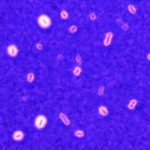Lien vers Pubmed [PMID] – 34228700
PLoS Biol 2021 Jul; 19(7): e3001276
Mobile genetic elements (MGEs) drive genetic transfers between bacteria using mechanisms that require a physical interaction with the cellular envelope. In the high-priority multidrug-resistant nosocomial pathogens (ESKAPE), the first point of contact between the cell and virions or conjugative pili is the capsule. While the capsule can be a barrier to MGEs, it also evolves rapidly by horizontal gene transfer (HGT). Here, we aim at understanding this apparent contradiction by studying the covariation between the repertoire of capsule genes and MGEs in approximately 4,000 genomes of Klebsiella pneumoniae (Kpn). We show that capsules drive phage-mediated gene flow between closely related serotypes. Such serotype-specific phage predation also explains the frequent inactivation of capsule genes, observed in more than 3% of the genomes. Inactivation is strongly epistatic, recapitulating the capsule biosynthetic pathway. We show that conjugative plasmids are acquired at higher rates in natural isolates lacking a functional capsular locus and confirmed experimentally this result in capsule mutants. This suggests that capsule inactivation by phage pressure facilitates its subsequent reacquisition by conjugation. Accordingly, capsule reacquisition leaves long recombination tracts around the capsular locus. The loss and regain process rewires gene flow toward other lineages whenever it leads to serotype swaps. Such changes happen preferentially between chemically related serotypes, hinting that the fitness of serotype-swapped strains depends on the host genetic background. These results enlighten the bases of trade-offs between the evolution of virulence and multidrug resistance and caution that some alternatives to antibiotics by selecting for capsule inactivation may facilitate the acquisition of antibiotic resistance genes (ARGs).





